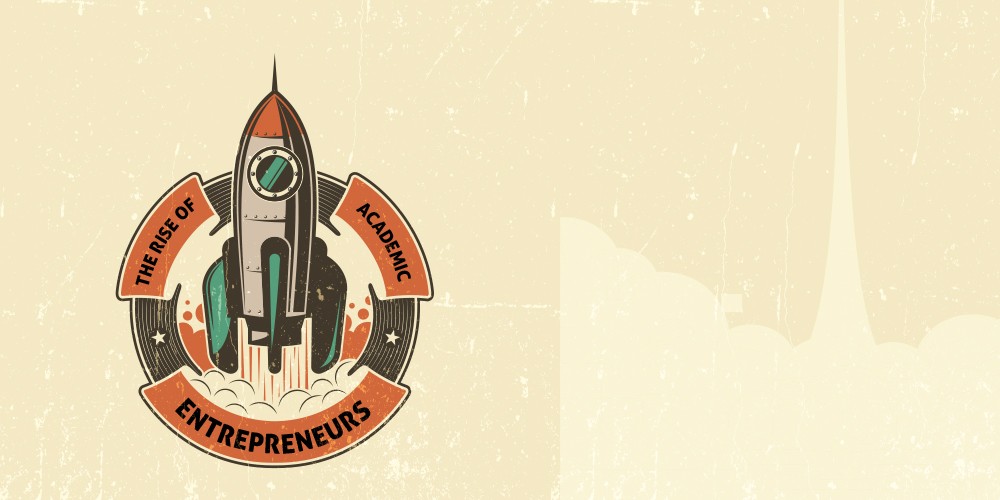Research to business plan: A metamorphosis
Author: Michelle Cortis

In recent years, there has been a shift in the relationship between research and commercial industries. Commercial viability almost always comes into question for ongoing research. Commercialisation can be a boon. When a research project has demonstrated its potential to become a viable business, funding opportunities increase, meaning the research can be turned into a product or service that people can use.
In 2018, as part of a Masters in Knowledge-Based Entrepreneurship, I analysed the commercial potential of an ongoing University of Malta project. I conducted an in-depth market feasibility study on Prof. Ing Joseph Cilia’s Smart Micro Combined Heat and Power System, a device that can be fitted into homes and offices to deliver heat as a by-product of electricity, reducing energy costs. Many EU countries are setting up incentives to make these systems more feasible and attractive to consumers.
For my dissertation, I developed a business plan for the research team. An engineer myself, and having earned a Masters by Research back in 2014, this was different to anything I had done before. My supervisors, Prof. Russell Smith and Dr Ing. Nicholas Sammut, helped me find the right balance between utilising my technical knowledge whilst also analysing the product’s commercial potential. Even my language changed through the process; I began to speak of ‘euros per day’ rather than ‘kilowatt hours’. I learnt to differentiate between technological features and what real benefits future users would gain.
Being presented with a physical product, initially one may assume that it is to be sold to customers, or protected through a patent and licensed to the private sector. However, my market analysis revealed new target audiences that had not been thought of before. Selling the device was not the only way to exploit the project’s commercial potential. What if we leased the product instead of selling it? Should we continue developing the product or is it already innovative enough? What if we developed a spin-out—would it be too expensive or is it worth the investment?
By analysing a project through a commercial lens, all these questions arise, pointing out potential ways to make a good project great. But what makes a good business plan great is when all these questions are answered.
The Project ‘A Smart Micro Combined Heat and Power System’ is financed by the Malta Council for Science & Technology, for and on behalf of the Foundation for Science and Technology through the FUSION: R&I Technology and Development Programme.
Are you carrying out research at the University of Malta which you think may have commercial potential? If so, contact the Knowledge Transfer Office on knowledgetransfer@um.edu.mt
The unusual suspects
When it comes to technology’s advances, it has always been said that creative tasks will remain out of their reach. Jasper Schellekens writes about one team’s efforts to build a game that proves that notion wrong.
The murder mystery plot is a classic in video games; take Grim Fandango, L.A. Noire, and the epic Witcher III. But as fun as they are, they do have a downside to them—they don’t often offer much replayability. Once you find out the butler did it, there isn’t much point in playing again. However, a team of academics and game designers are joining forces to pair open data with computer generated content to create a game that gives players a new mystery to solve every time they play.

The University of Malta’s Dr Antonios Liapis and New York University’s Michael Cerny Green, Gabriella A. B. Barros, and Julian Togelius want to break new ground by using artificial intelligence (AI) for content creation.
They’re handing the design job over to an algorithm. The result is a game in which all characters, places, and items are generated using open data, making every play session, every murder mystery, unique. That game is DATA Agent.
Gameplay vs Technical Innovation
AI often only enters the conversation in the form of expletives, when people play games such as FIFA and players on their virtual team don’t make the right turn, or when there is a glitch in a first-person shooter like Call of Duty. But the potential applications of AI in games are far greater than merely making objects and characters move through the game world realistically. AI can also be used to create unique content—they can be creative.
While creating content this way is nothing new, the focus on using AI has typically been purely algorithmic, with content being generated through computational procedures. No Man’s Sky, a space exploration game that took the world (and crowdfunding platforms) by storm in 2015, generated a lot of hype around its use of computational procedures to create varied and different content for each player. The makers of No Man’s Sky promised their players galaxies to explore, but enthusiasm waned in part due to the monotonous game play. DATA Agent learnt from this example. The game instead taps into existing information available online from Wikipedia, Wikimedia Commons, and Google Street View and uses that to create a whole new experience.
Data: the Robot’s Muse
A human designer draws on their experiences for inspiration. But what are experiences if not subjectively recorded data on the unreliable wetware that is the human brain? Similarly, a large quantity of freely available data can be used as a stand-in for human experience to ‘inspire’ a game’s creation.
According to a report by UK non-profit Nesta, machines will struggle with creative tasks. But researchers in creative computing want AI to create as well as humans can.
However, before we grab our pitchforks and run AI out of town, it must be said that games using online data sources are often rather unplayable. Creating content from unrefined data can lead to absurd and offensive gameplay situations. Angelina, a game-making AI created by Mike Cook at Falmouth University created A Rogue Dream. This game uses Google Autocomplete functions to name the player’s abilities, enemies, and healing items based on an initial prompt by the player. Problems occasionally arose as nationalities and gender became linked to racial slurs and dangerous stereotypes. Apparently there are awful people influencing autocomplete results on the internet.
DATA Agent uses backstory to mitigate problems arising from absurd results. A revised user interface also makes playing the game more intuitive and less like poring over musty old data sheets.

So what is it really?
In DATA Agent, you are a detective tasked with finding a time-traveling murderer now masquerading as a historical figure. DATA Agent creates a murder victim based on a person’s name and builds the victim’s character and story using data from their Wikipedia article.
This makes the backstory a central aspect to the game. It is carefully crafted to explain the context of the links between the entities found by the algorithm. Firstly, it serves to explain expected inconsistencies. Some characters’ lives did not historically overlap, but they are still grouped together as characters in the game. It also clarifies that the murderer is not a real person but rather a nefarious doppelganger. After all, it would be a bit absurd to have Albert Einstein be a witness to Attila the Hun’s murder. Also, casting a beloved figure as a killer could influence the game’s enjoyment and start riots. Not to mention that some of the people on Wikipedia are still alive, and no university could afford the inevitable avalanche of legal battles.
Rather than increase the algorithm’s complexity to identify all backstory problems, the game instead makes the issues part of the narrative. In the game’s universe, criminals travel back in time to murder famous people. This murder shatters the existing timeline, causing temporal inconsistencies: that’s why Einstein and Attila the Hun can exist simultaneously. An agent of DATA is sent back in time to find the killer, but time travel scrambles the information they receive, and they can only provide the player with the suspect’s details. The player then needs to gather intel and clues from other non-player characters, objects, and locations to try and identify the culprit, now masquerading as one of the suspects. The murderer, who, like the DATA Agent, is from an alternate timeline, also has incomplete information about the person they are impersonating and will need to improvise answers. If the player catches the suspect in a lie, they can identify the murderous, time-traveling doppelganger and solve the mystery!

De-mystifying the Mystery
The murder mystery starts where murder mysteries always do, with a murder. And that starts with identifying the victim. The victim’s name becomes the seed for the rest of the characters, places, and items. Suspects are chosen based on their links to the victim and must always share a common characteristic. For example, Britney Spears and Diana Ross are both classified as ‘singer’ in the data used. The algorithm searches for people with links to the victim and turns them into suspects.
But a good murder-mystery needs more than just suspects and a victim. As Sherlock Holmes says, a good investigation is ‘founded upon the observation of trifles.’ So the story must also have locations to explore, objects to investigate for clues, and people to interrogate. These are the game’s ‘trifles’ and that’s why the algorithm also searches for related articles for each suspect. The related articles about places are converted into locations in the game, and the related articles about people are converted into NPCs. Everything else is made into game items.
The Case of Britney Spears
This results in games like “The Case of Britney Spears” with Aretha Franklin, Diana Ross, and Taylor Hicks as the suspects. In the case of Britney Spears, the player could interact with NPCs such as Whitney Houston, Jamie Lynn Spears, and Katy Perry. They could also travel from McComb in Mississippi to New York City. As they work their way through the game, they would uncover that the evil time-traveling doppelganger had taken the place of the greatest diva of them all: Diana Ross.
Oops, I learned it again
DATA Agent goes beyond refining the technical aspects of organising data and gameplay. In the age where so much freely available information is ignored because it is presented in an inaccessible or boring format, data games could be game-changing (pun intended).
In 1985, Broderbund released their game Where in the World is Carmen Sandiego?, where the player tracked criminal henchmen and eventually mastermind Carmen Sandiego herself by following geographical trivia clues. It was a surprise hit, becoming Broderbund’s third best-selling Commodore game as of late 1987. It had tapped into an unanticipated market, becoming an educational staple in many North American schools.
Facts may have lost some of their lustre since the rise of fake news, but games like Where in the World is Carmen Sandiego? are proof that learning doesn’t have to be boring. And this is where products such as DATA Agent could thrive. After all, the game uses real data and actual facts about the victims and suspects. The player’s main goal is to catch the doppelganger’s mistake in their recounting of facts, requiring careful attention. The kind of attention you may not have when reading a textbook. This type of increased engagement with material has been linked to improving information retention.In the end, when you’ve traveled through the game’s various locations, found a number of items related to the murder victim, and uncovered the time-travelling murderer, you’ll hardy be aware that you’ve been taught.
‘Education never ends, Watson. It is a series of lessons, with the greatest for the last.’ – Sir Arthur Conan Doyle, His Last Bow.
#GetLearnD
Students tutoring students
According to MATSEC, two in every three 18-year-old students don’t make it from sixth form to university. Gail Sant speaks to the team behind LearnD to find out more about their take on student-centred education.
You love films, videos, and photos. You relax while watching Netflix, and learn new skills on platforms like Skillshare and YouTube. Me? I adore the written word. Books, magazines, blogs are all I need to live a happy life. People are unique. And we all learn things in a unique way.
Different people require different teaching methods to learn. But most classroom set-ups involve one teacher, one lesson, and thirty-odd students. The lesson is interpreted in thirty different ways; a few absorb more than others, leaving some in need of extra help to ace their maths test. And how do they do that? With private lessons.
In Malta, private lessons are the go-to solution for students struggling with a subject. However, these sessions tend to be a carbon copy of school classes: one tutor, one lesson, multiple students. This problem was the seed that gave rise to the education-focused startup LearnD.
The philosophy
LearnD is a tutoring app invented by Luke Collins, Jake Xuereb, and Dr Jean-Paul Ebejer (Centre for Molecular Medicine and Biobanking, University of Malta). The concept behind it is simple, Ebejer says; ‘it’s a bridge between students who can act as mentors and students who need the help.’
LearnD does away with the one-size-fits-all standard of teaching and offers students tailor-made tutoring. Individuals are treated as such, their problems tackled through dedicated sessions. As a student, you don’t need to sit through a whole syll

abus of private lessons. The idea is to identify your weak points and hone in on them in select sessions. This is both time and money-efficient.
Xuereb believes ‘private lessons can make students lazy.’ They don’t need to evaluate their problems, or focus on where their issues lie. Not when they know they’ll just cover all the topics at various points during their weekly appointment with their second teacher on Tuesday night. LearnD focuses on dividing attention unequally. If you get an easy A in physical chemistry but struggle to pass organic chemistry, it only makes sense to give the latter some extra TLC. To get to this point, students need to take a step back from their desks and separate their strengths from their weaknesses.
This is also a big plus for tutors who don’t want to (or can’t) commit to teaching a whole syllabus. They can simply prepare a lesson for the requested topic and leave it at that, earning some extra money to accompany their stipend while gaining teaching experience.
But LearnD isn’t just about academia. Some lecturers lose touch with ‘the student life’, distancing their relationship with students. Conversely, student-tutors know the struggles a peer would be going through and can provide support. ‘No one would have a better understanding of what a sixth former needs to do to get into medicine than a medicine student,’ says Xuereb. ‘Through LearnD you can find people who have been through the exact same thing and who can offer their best advice on anything from time management to de-stressing, and everything else.’
Making it happen
The original concept was more related to finding a way for academically inclined 6th form students to contribute productively to society,’ says Xuereb. When he spoke to Collins, a fellow University of Malta student and Xuereb’s former maths tutor, the idea went from ‘an online local network’ to ‘app’. At the time, there were no local tutoring apps.
Despite both being passionate about the idea, they soon realised that they needed someone with business experience, and that’s where Ebejer came in: the LearnD team was born!
The process that made this idea into reality was not a simple one. Xuereb and Collins spent over six months working on the app, learning about the tech behind app-making and coming up with a business plan.
They got their break when they won the Take-Off Seed Fund Award in 2018 and got the necessary funds to make the app a reality. They quickly got the ball rolling, hiring designers, app developers, and marketing agents. The team grew; the app was built. Then, during the KSU Freshers’ Week in 2018, the app was partially launched, inviting potential tutors to apply. The app is now fully launched and available for students.
Troubles

As with all big projects, the team ran into a few setbacks along the way. One prominent techy mishap didn’t allow them to launch the app on the Apple Store, making it difficult to keep up with the launch date.
Since the app is used by underage students, there were also a lot of safety features which needed inclusion. Tutors upload their police conducts and ID cards. Also, to make sure LearnD’s service is reliable, the team not only analyses tutors’ qualifications, but they also try and test each applicant out themselves. And for accounts which belong to students under the age of 16, parents need to authorise any communication which goes on through the app.
The team persisted through the struggles they encountered and continue to work hard to solve any problems which crop up. Despite difficulties with time management, Collins and Xuereb, both undergraduate students, expressed how this app allowed them to dive into the working world. They gained entrepreneurial maturity, understanding the importance of a reliable team which shares the same ideas and work ethic, as well as dividing funds for the project’s overall benefit.
A LearnD future
The LearnD story doesn’t stop here. ‘We want to renovate the education space,’ says Ebejer, adding that they wish to take the next step and make it internationally available. Malta’s size makes it the perfect test bed, but they think that the app shouldn’t be limited to its home.
According to MATSEC, in 2017 only 27% of 18-year-old students acquired the necessary qualifications to get into university. Collins expressed that students ‘shouldn’t get lost’ because of a bad exam result or because of a mismatched student-teacher scenario. Students deserve to be treated as individuals, and LearnD can offer them that.





